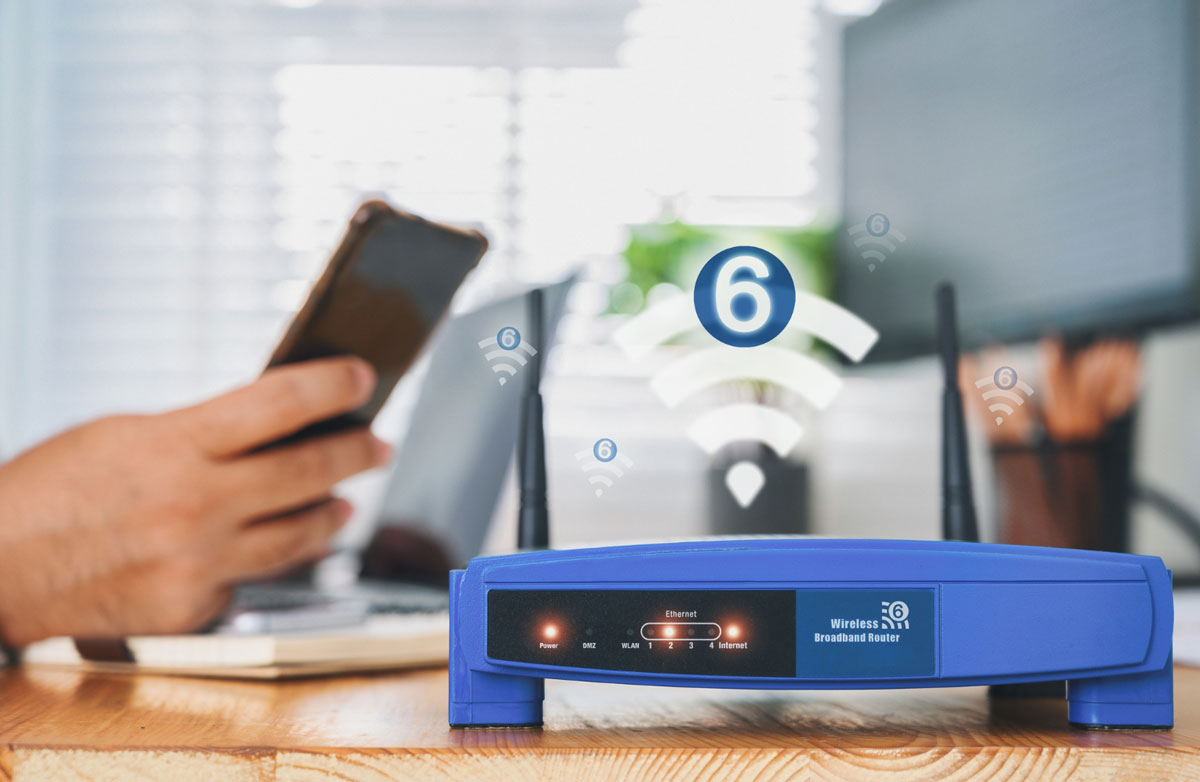
WWAN vs. WLAN vs. LAN: What’s the Difference?
WWAN, WLAN and LAN: what’s the difference? These are similar technologies, but knowing which one you need is critical. The primary difference between WWAN, WLAN and LAN is their scope or area of coverage: WWAN connections have a very broad scope, WLAN networks have a shorter range and LAN connections have a shorter range still.
Understanding the advantages and disadvantages of these networks can help organizations optimize their infrastructure for speed, security, and cost-effectiveness. Choosing between LAN, WLAN, or WWAN depends on the scale, mobility, and reliability requirements of the network.
Let’s look at the differences, pros and cons of WWAN, WLAN and LAN technologies.
Definitions: WWAN, WLAN and LAN.
Let’s start with the basic definitions for WWAN, WLAN and LAN connections.
LAN and WAN stand for “Local Area Network” and “Wide Area Network,” respectively.
- WWAN is a wireless wide area network. WWANs are typically used to connect devices like laptops and smartphones to the internet over long distances, often using cellular data networks.
- WLAN is a wireless local area network. WLANs are used to connect devices like laptops, smartphones and printers to each other and to the internet over shorter distances, often using Wi-Fi.
- LAN, as mentioned, is a local area network. LANs are used to connect devices like computers, printers and servers to each other over short distances
WWAN, WLAN and LAN are similar, but they are applied to different situations. A LAN is ideal for office buildings, homes, and schools where devices are in close proximity, while a WAN covers a larger geographical area, connecting multiple LANs together, such as in large corporations or government networks.
WWAN Use Cases, Pros and Cons
A WWAN can be a great solution for organizations that need to connect devices over long distances—organizations that operate in rural areas or that have multiple locations spread out over a wide area can benefit from a WWAN.
Additionally, WWAN can be a good option (if not the only option) for organizations that need to connect devices that are constantly moving, like vehicles or ships.
However, WWANs can be expensive to set up and maintain. The speed and reliability of WWAN connections can be variable, depending on factors like the strength of the signal and the number of users on the network. WWANs need to be planned by a professional to be effective.
WLAN Use Cases, Pros and Cons
WLANs are a good solution for organizations that need to connect devices over shorter distances. Rather than connecting through a city, they may be connecting through a campus. WLANs are often used in office buildings, schools and other environments where there is a need to connect multiple devices in close proximity to each other.
In addition, WLANs can be a good option for organizations that need to connect devices that are constantly moving, like laptops and smartphones.
One of the major advantages of WLAN is its flexibility and ease of deployment. Unlike a wired LAN, which requires extensive cabling, WLANs rely on wireless signals, making it easier to scale and adjust based on organizational needs.
Like WWANs, WLANs can be expensive to set up and maintain, and their speed and reliability are dependent on technology and configuration. For large volumes of uses, they can become prohibitively expensive.
However, some disadvantages of WLAN include potential security vulnerabilities, as wireless networks can be more susceptible to cyber threats if not properly secured. Additionally, interference from other wireless devices and physical obstructions like walls and furniture can impact performance.
LAN Use Cases, Pros and Cons
LANs are a good solution for organizations that need to connect devices over short distances. LANs are often used in office buildings, schools and other environments where there is a need to connect multiple devices in close proximity to each other. LANs can be a good option for organizations that need to connect devices that are not constantly moving, like servers and printers.
Since they are wired, LAN connections are most likely to be reliable, but they are less flexible and agile. They require that everything be within a single building.
The benefit of LAN networks is their high speed, security, and reliability. Since LANs use direct, wired connections, they experience minimal latency and are less prone to signal interference. Additionally, they provide better data security compared to wireless networks.
On the other hand, disadvantages of LAN include the higher initial setup costs due to wiring and infrastructure requirements. Additionally, LANs have limited mobility, meaning devices must stay within the network’s physical boundaries to maintain connectivity.
Cellular vs. Wi-Fi vs. Wired Connections

There are three primary types of network connections associated with WWAN, WLAN and LAN technologies (although, there are some exceptions): cellular, Wi-Fi___33 and wired. Each has its own set of pros and cons that make it more or less suitable for different situations.
Cellular connections are the most flexible but also the most expensive. They are best for organizations that need to connect devices over long distances or that have mobile devices that need to be constantly connected.
Wi-Fi connections are less expensive than cellular but more expensive than wired. They are best for organizations that need to connect devices over shorter distances or that have mobile devices that need to be constantly connected.
Wired connections are the least flexible but also the least expensive. They are best for organizations that need to connect devices over short distances and that do not have mobile devices that need to be constantly connected.
Realistically, most organizations will opt for wired connections when they can. But now that the internet of things and mobile devices are so popular, wired connections are largely a thing of the past—used for devices like large-format printers.
Instead, the choice is usually between cellular connections and Wi-Fi connections. Cellular connections have made great strides in speed, reliability and accessibility, but they are still more expensive than Wi-Fi. When organizations can use Wi-Fi, they generally will rely upon their Wi-Fi networks as a balance between accessibility, speed and cost.
Do You Need WWAN vs. WLAN?
If you need to connect devices over long distances, WWAN may be the best option. If you need to connect devices over shorter distances, WLAN may be better. And if you are only trying to maintain a smaller area, LAN may be more cost-effective for you.
Do You Need WLAN vs. LAN?
If you need to connect devices that are constantly moving, WLAN may be the better option. If you only need to connect devices within a single building or area, LAN may be the easier, cheaper and more direct solution.
Difference Between WWAN and WLAN
The main difference between WWAN and WLAN is range — a WWAN can cover a much larger area than a WLAN. Additionally, WWANs are typically used to connect devices to the internet while WLANs are used to connect devices to each other. But WLAN networks can be extremely versatile and highly secure.
Most organizations and individuals will only need a LAN or a WLAN. WWAN systems are used for extraordinarily robust networks with very wide scopes.
What Does Your Organization Need to Connect?
Now you know the advantages and disadvantages of WLAN, WWAN and LAN. But the best thing you can do to ensure that your network has what it needs is to connect with a professional guide.
At Red River, we can assess your organization’s current and future needs to determine which network makes the most sense for you.
Contact us today to find out more.
FAQs

written by
Corrin Jones
Corrin Jones is the Director of Digital Demand Generation. With over ten years of experience, she specializes in creating content and executing campaigns to drive growth and revenue. Connect with Corrin on LinkedIn.




